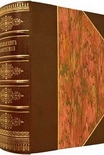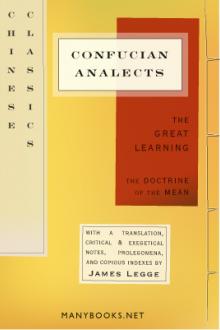Myths and Legends of China by E. Werner (free ebook reader for iphone TXT) 📗

- Author: E. Werner
Book online «Myths and Legends of China by E. Werner (free ebook reader for iphone TXT) 📗». Author E. Werner
Many of these games became obsolete in course of time, and new ones were invented. At the end of the Monarchical Period, during the Manchu dynasty, we find those most in use to be foot-shuttlecock, lifting of beams headed with heavy stones—dumb-bells four feet long and weighing thirty or forty pounds—kite-flying, quail-fighting, cricket-fighting, sending birds after seeds thrown into the air, sauntering through fields, playing chess or ‘morra,’ or gambling with cards, dice, or over the cricket- and quail-fights or seed-catching birds. There were numerous and varied children’s games tending to develop strength, skill, quickness of action, parental instinct, accuracy, and sagacity. Theatricals were performed by strolling troupes on stages erected opposite temples, though permanent theatres also existed, female parts until recently being taken by male actors. Peep-shows, conjurers, ventriloquists, acrobats, fortune-tellers, and story-tellers kept crowds amused or interested. Generally, ‘young China’ of the present day, identified with the party of progress, seems to have adopted most of the outdoor but very few of the indoor games of Western nations.
Domestic Life
In domestic or private life, observances at birth, betrothal, and marriage were elaborate, and retained superstitious elements. Early rising was general. Shaving of the head and beard, as well as cleaning of the ears and massage, was done by barbers. There were public baths Page 47in all cities and towns. Shops were closed at nightfall, and, the streets being until recent times ill-lit or unlit, passengers or their attendants carried lanterns. Most houses, except the poorest, had private watchmen. Generally two meals a day were taken. Dinners to friends were served at inns or restaurants, accompanied or followed by musical or theatrical performances. The place of honour is stated in Western books on China to be on the left, but the fact is that the place of honour is the one which shows the utmost solicitude for the safety of the guest. It is therefore not necessarily one fixed place, but would usually be the one facing the door, so that the guest might be in a position to see an enemy enter, and take measures accordingly.
Lap-dogs and cage-birds were kept as pets; ‘wonks,’ the huang kou, or ‘yellow dog,’ were guards of houses and street scavengers. Aquaria with goldfish were often to be seen in the houses of the upper and middle classes, the gardens and courtyards of which usually contained rockeries and artistic shrubs and flowers.
Whiskers were never worn, and moustaches and beards only after forty, before which age the hair grew, if at all, very scantily. Full, thick beards, as in the West, were practically never seen, even on the aged. Snuff-bottles, tobacco-pipes, and fans were carried by both sexes. Nails were worn long by members of the literary and leisured classes. Non-Manchu women and girls had cramped feet, and both Manchu and Chinese women used cosmetics freely.
Industrial Institutions
While the men attended to farm-work, women took care of the mulberry-orchards and silkworms, and did Page 48spinning, weaving, and embroidery. This, the primitive division of labour, held throughout, though added to on both sides, so that eventually the men did most of the agriculture, arts, production, distribution, fighting, etc., and the women, besides the duties above named and some field-labour, mended old clothes, drilled and sharpened needles, pasted tin-foil, made shoes, and gathered and sorted the leaves of the tea-plant. In course of time trades became highly specialized—their number being legion—and localized, bankers, for instance, congregating in Shansi, carpenters in Chi Chou, and porcelain-manufacturers in Jao Chou, in Kiangsi.
As to land, it became at an early age the property of the sovereign, who farmed it out to his relatives or favourites. It was arranged on the ching, or ‘well’ system—eight private squares round a ninth public square cultivated by the eight farmer families in common for the benefit of the State. From the beginning to the end of the Monarchical Period tenure continued to be of the Crown, land being unallodial, and mostly held in clans or families, and not entailed, the conditions of tenure being payment of an annual tax, a fee for alienation, and money compensation for personal services to the Government, generally incorporated into the direct tax as scutage. Slavery, unknown in the earliest times, existed as a recognized institution during the whole of the Monarchical Period.
Production was chiefly confined to human and animal labour, machinery being only now in use on a large scale. Internal distribution was carried on from numerous centres and at fairs, shops, markets, etc. With few exceptions, the great trade-routes by land and sea have remained the same during the last two thousand years. Page 49Foreign trade was with Western Asia, Greece, Rome, Carthage, Arabia, etc., and from the seventeenth century A.D. more generally with European countries. The usual primitive means of conveyance, such as human beings, animals, carts, boats, etc., were partly displaced by steam-vessels from 1861 onward.
Exchange was effected by barter, cowries of different values being the prototype of coins, which were cast in greater or less quantity under each reign. But until within recent years there was only one coin, the copper cash, in use, bullion and paper notes being the other media of exchange. Silver Mexican dollars and subsidiary coins came into use with the advent of foreign commerce. Weights and measures (which generally decreased from north to south), officially arranged partly on the decimal system, were discarded by the people in ordinary commercial transactions for the more convenient duodecimal subdivision.
Arts
Hunting, fishing, cooking, weaving, dyeing, carpentry, metallurgy, glass-, brick-, and paper-making,





Comments (0)